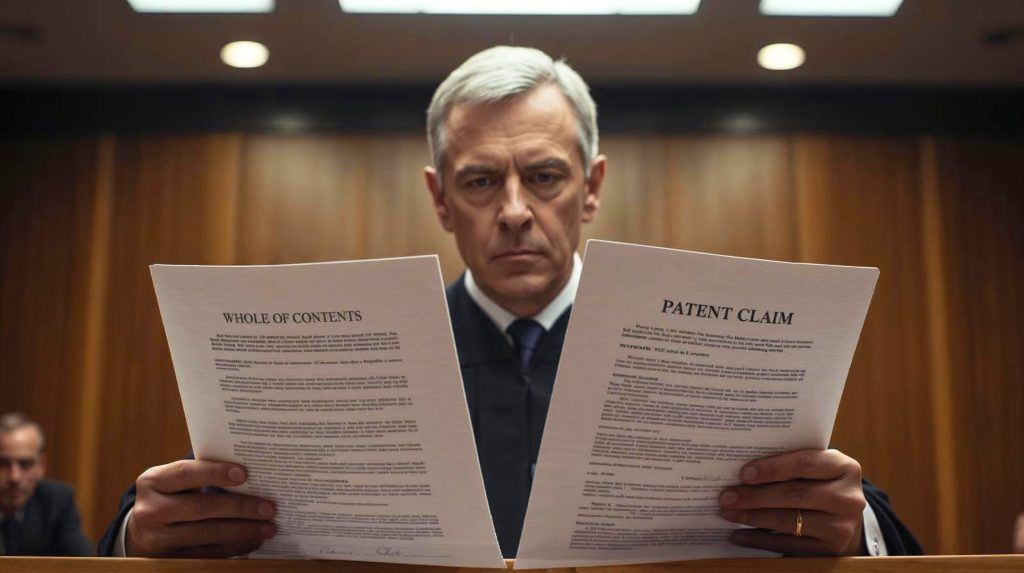August 2021 saw a slew of decisions issued by the Assistant Commissioners of Trade Marks in New Zealand. After significant frustrations with the rate of issuance in recent years, the uplift in volume is to be welcomed by trade mark practitioners and clients alike.
Of the August 2021 batch, one opposition decision and one invalidity decision are worthy of particular note. The opposition decision is noteworthy because of the number of grounds pleaded and the resulting costs consequences; the invalidity decision because it (again) highlights the importance of filing evidence in an admissible form. Both decisions highlight the need for parties in trade mark proceedings to seek suitably experienced counsel.
The opposition decision – Magnum Bikes v BMW
It’s been a number of years since I saw a ‘kitchen sink’ trade mark opposition; that is, an opposition advanced on more than four or five grounds. (1)(2) ‘Kitchen sink’ trade mark oppositions are rare because opponents tend to focus their efforts on the ground(s) that ultimately stand the greatest chance of success. I was therefore very surprised to see the ‘kitchen sink’ approach used by the unsuccessful opponent, BMW, in Magnum Bikes Ltd v Bayerische Motoren Werke AG [2021] NZIPOTM 19 (“Magnum Bikes v BMW”).
A magnum opus
In its Notice, BMW pleaded a staggering eleven grounds of opposition, including two grounds based on trade mark infringement and three grounds based on passing off/breach of the Fair Trading Act.
As seasoned practitioners will know, trade infringement has not been a valid ground of opposition since Assistant Commissioner Glover’s decision in Hayden Crowther v Apple Inc [2013] NZIPOTM 48, (3) while passing off/breach of the Fair Trading Act have frequently been deemed superfluous opposition grounds in since 2016. (4) Why these grounds – as well as the ones under section 18 of the Trade Marks Act (which were really section 17 grounds in disguise) – were pleaded, therefore, is really quite puzzling.
All but one?!
If pleading eleven grounds of opposition does not surprise readers, then what must do is BMW’s decision to pursue all but one of the eleven grounds at the hearing – despite neither of the parties having filed any evidence (5) (which immediately destined numerous grounds of opposition to failure) and despite BMW having had the opportunity to discontinue any number of grounds of opposition prior to the hearing. (6)
BMW’s failure to discontinue grounds of opposition clearly annoyed Assistant Commissioner Nichols, who felt compelled to make the following comments (ouch!):
116. The Opponent’s pleadings are replete with the repetitive and untenable grounds parties have frequently been advised to avoid. The pleadings under section 17(1)(b) are redundant. None of grounds 2 to 5, 7 to 9, or 11 could possibly succeed if ground 1 failed. Grounds 6 and 7 could never succeed, for the reasons set out in Hayden Crowther. Grounds 8 and 9 did not invoke a proper application of section 18.
It was the Assistant Commissioner’s view (at [117]) that “[t]he outcome of these proceedings depended entirely on ground 1 – section 17(1)(a) and ground 10 – section 25(1)(b)”. In my view, the Assistant Commissioner was too kind: there being no evidence, the outcome really only depended on one ground – ground 10 under section 25(1)(b) – as this ground does not require an opponent to file evidence for its opposition to succeed. (7) It is this ground only that, in my humble view, BMW should have pursued at the hearing.
Costs consequences for BMW
As a result of its failings, BMW was hit not only with an award of standard scale costs but also a 25% uplift. As Assistant Commissioner Nichols stated at [118], “…the trade mark opposition system is intended to operate as an efficient method of determining disputes, and increased awards of costs can and should be made to discourage the practice of pleading and pursuing unmeritorious grounds of opposition in this forum”.
The uplift awarded was consistent with Assistant Commissioners’ practice since 2016 (8) and was reflective of Magnum Bikes’ lack of participation in the proceeding. (9) Had Magnum Bikes played more of a role in the opposition, I venture the uplift would have been much greater – perhaps as a high as 75%, as awarded in Mixi, Inc. v Monster Energy Company [2020] NZIPOTM 19.
Get the message?
If parties needed a message about which grounds of opposition to pursue and when, then Magnum Bikes v BMW shouts it loud and clear: focus your grounds at the outset, and if you need to, revisit them before the hearing so you don’t waste Assistant Commissioners’ time.
The invalidity decision – Zhengtao Jian v Pit Viper
The decision in Zhengtao Jian v Pit Viper, LLC [2021] NZIPOTM 21 (“Zhengtao Jian v Pit Viper”) is the third since June 2021 (10) in which evidence has been held inadmissible because of a failure to meet the proper standard. Coincidence, or is something more sinister going on…? Whatever the reason, it unusual to see a ‘run’ of inadmissibility findings in IPONZ decisions.
What is the proper standard?
The form of evidence in trade mark proceedings before IPONZ is set by section 160(1) of the Trade Marks Act 2002. Section 160(1) provides that “[s]ubject to any regulations, in any proceeding under this Act before the Commissioner, the evidence must be given by affidavit or statutory declaration in the absence of directions to the contrary”. (11)
The Oaths and Declarations Act 1957 governs the witnessing requirements of a statutory declaration, and the requirements of affidavits are governed by the High Court Rules 2016. (12) If readers look closely at the requirements under the Oaths and Declarations Act and the High Court Rules, they will see they are not complicated.
Why was the evidence in Zhengtao Jian v Pit Viper inadmissible?
In Zhengtao Jian v Pit Viper, Pit Viper applied to invalidate a registration owned by Zhengtao Jian. Zhengtao Jian did not defend the application and so Shanghai Yunzheng was charged with filing evidence to support a prima facie (13) case that the subject mark was not registrable as at the relevant date. Pit Viper filed the Statutory Declaration of Christopher Garcin (called the ‘Garcin Document’ in the decision).
The Assistant Commissioner found the Garcin Document inadmissible because it had not been witnessed in accordance with the requirements of the Oaths and Declarations Act 1957. (14) The declaration had been witnessed by a pilot with SkyWest airlines: unfortunately for Pit Viper, however, pilots are not included in the categories of persons listed under section 11(2) of the Oaths and Declarations Act – such persons being a Commonwealth representative, a Judge, a notary public, or a solicitor of the High Court of New Zealand. (15) Its evidence being inadmissible, Pit Viper was unable to make its grounds of invalidity and its application failed.
Its failure should have come as no surprise, however, because not only was Pit Viper aware of the witnessing defect in its evidence but it had also failed to remedy it when given the opportunity to do so. (16)
Leiying Zhu v Shanghai Yunzheng and Guangdong Puss v Ye Guofu
As I mentioned, the decision in Zhengtao Jian v Pit Viper is the third since June 2021 in which evidence has been held inadmissible. It is worth noting the other two – Leiying Zhu v Shanghai Yunzheng Catering Management Co. Limited [2021] NZIPOTM 14 (“Leiying Zhu v Shanghai Yunzheng”) and Guangdong Puss Investment Co., Ltd v Ye Guofu [2021] NZIPOTM 17 (“Guangdong Puss v Ye Guofu”) – because in both cases the evidence was held inadmissible for almost identical reasons.
In Leiying Zhu v Shanghai Yunzheng, Shanghai Yunzheng applied to invalidate a registration owned by Leiying Zhu. As with Zhengtao Jian in Zhengtao Jian v Pit Viper, Leiying Zhu did not defend the application and so Shanghai Yunzheng was charged with filing evidence to support a prima facie case that the subject mark was not registrable as at the relevant date. Shanghai Yunzheng filed two declarations, including one from its China-based IP Director, Ji Fangping, which was witnessed by a signatory on behalf of the China Council for the Promotion of International Trade (CCPIT).
In Guangdong Puss v Ye Guofu, Ye Guofu opposed registration of an application lodged by Guangdong Puss. Although Guangdong Puss filed a counterstatement, it did not file any evidence. Ye Guofu, a resident of China, filed a single declaration in his own name, also witnessed by a signatory on behalf of the CCPIT.
In both cases, the Assistant Commissioners found the declarations inadmissible. They did so for almost identical reasons:
(a) In both cases, the certificates annexed to the declarations did not establish that the signatory on behalf of the CCPIT was an authorised witness under section 11(2) of the Oaths and Declarations Act 1957. In other words, the declarations were not witnessed by either a Commonwealth representative, a Judge, a notary public, or a solicitor of the High Court of New Zealand;
(b) In Leiying Zhu v Shanghai Yunzheng, was the CCPIT signatory’s certificate annexed to the Fangping declaration only certified that the signature of the witness was genuine – it did not confirm that the witness declared the truth of the contents of the declaration; (17) and
(c) In Guangdong Puss v Ye Guofu, the alleged declaration was signed by the witness on 29 December 2018 where the separate certificate from CCPIT was dated 7 January 2019 – they should have shared the same date.
Some rules are not meant to be broken…
While some rules are meant to be broken (allegedly), some aren’t – including those under the Oaths and Declarations Act. Thus it is that, as with the evidence in Zhengtao Jian v Pit Viper, the inadmissibility findings in Leiying Zhu v Shanghai Yunzheng and Guangdong Puss v Ye Guofu should have come as no surprise to the respective applicants because, quite simply, they did not follow the rules.
Conclusion – the do’s and don’ts
The ‘dos and don’ts’ from Magnum Bikes v BMW and Zhengtao Jian v Pit Viper are clear:
- Do focus your grounds of opposition; don’t plead every ground under the sun;
- Do discontinue grounds of opposition before the hearing to mitigate potential costs exposure; don’t annoy Assistant Commissioners and waste their time by failing to do so;
- Do file evidence in the appropriate form; don’t forget the rules; and, finally
- Do seek suitable expert representation; don’t take unnecessary risk.
[1] The most oft used grounds are probably ss 17(1)(a) (use of mark likely to deceive or confuse); 25(1)(b) (confusingly similar to registered mark); 25(1)(c) (well known mark) and 32(1)(not the owner). Section 17(1)(b) (contrary to law) has also been a popular ground but as noted in this article its popularity is waning.
[2] Prior to August 2021, the most recent example of what I would call a kitchen sink opposition was Switza Watch Company Limited v Federation of the Swiss Watch Industry FH [2016] NZIPOTM 6. In that case, the opponent, Federation of the Swiss Watch Industry FH, pleaded ten grounds of opposition. In that case, the opponent, Federation of the Swiss Watch Industry FH, pleaded ten grounds of opposition. All but two of the grounds did not need to be decided or were unsuccessful, which begs the question why the they were pursued at the hearing when the opponent could have proceeded with only the most meritorious grounds at the hearing.
[3] Hayden Crowther v Apple Inc [2013] NZIPOTM 48 at [68].
[4] See Swatch AG v Apple Inc [2016] NZIPOTM 20 at [44]-[50], Shenzen Motoma Power Co Ltd v Motorola Trademark Holdings LLC [2016] NZIPOTM 25 at [77]-[80] and Tyremax LP v Bridgestone Licensing Services, Inc [2017] NZIPOTM 13 at [157]-[158] as the ‘foundation’ decisions behind dropping breach of the Fair Trading Act and passing off as meritorious grounds of opposition under section 17(1)(b) of the Trade Marks Act 2002.
[5] As noted in [47] of the decision, BMW sought to plug the evidentiary gap by including statements about the history of BMW (which the Assistant Commissioner ignored), pointing the Assistant Commissioner to various trade mark registrations (which the Assistant Commissioner did accept) and asking the Assistant Commissioner to take judicial notice of ‘the status’ of BMW’s trade marks (which the Assistant Commissioner declined to do, saying (at [52])“[t]he mere fact of registration is insufficient to create awareness of a mark, and is not evidence of use”.
[6] As trade mark practitioners will be aware, after the completion of the evidential stages of an opposition proceeding IPONZ asks the parties, as part of the pre-hearing process, to confirm if any grounds or matters pleaded will not be pursued at the hearing.
[7] See, for example, Red Kangaroo Beverages Pty Ltd v ASCO Group Limited [2021] NZIPOTM 1.
[8] See So Systems Limited v Soluxury HMC [2016] NZIPOTM 13 at [86]-[94]; and since then, for example, Halla Holdings Corporation v Man Truck & Bus AG [2017] NZIPOTM 8 at [91]-[98], Spiritual & Personal Growth Trust v Jeunesse Global Holdings, LLC [2018] NZIPOTM 15 at [71]-[76], Nutrition Fit 2004, Limited v Monster Energy Company [2018] NZIPOTM 19 at [83]-[85], Croxley Stationery Limited v Collins Debden Pty Limited [2019] NZIPOTM 1 at [67]-[77], Sheppard Cycles Australia Pty Ltd v iRIDE Limited [2019] NZIPOTM 18 at [43]-[48], NBA Properties, Inc v Monster Energy Company [2020] NZIPOTM 1, Mixi, Inc v Monster Energy Company [2020] NZIPOTM 19, Brandt’s Fruit Trees I, Inc. v Apple and Pear Australia Limited [2021] NZIPOTM 4 at [155]-[165] and The Premium Liquor Co. Limited v Hint, Inc. [2021] NZIPOTM 24 at [83]-[89].
[9] As noted by the Assistant Commissioner at [118] of the decision.
[10] Leiying Zhu v Shanghai Yunzheng Catering Management Co. Limited [2021] NZIPOTM 14, Guangdong Puss Investment Co., Ltd v Ye Guofu [2021] NZIPOTM 17 and Zhengtao Jian v Pit Viper, LLC [2021] NZIPOTM 21.
[11] As noted in Leiying Zhu v Shanghai Yunzheng Catering Management Co. Limited [2021] NZIPOTM 14 at [17], Guangdong Puss Investment Co., Ltd v Ye Guofu [2021] NZIPOTM 17 at [9] and Zhengtao Jian v Pit Viper, LLC [2021] NZIPOTM 21 at [10].
[12] See HCR 9.68 – 9.89. Leiying Zhu v Shanghai Yunzheng Catering Management Co. Limited [2021] NZIPOTM 14 at [17]-[23] and [30] for a statement of the relevant law and similar cases.
[13] It is generally considered that establishing a prima facie case in an undefended invalidity application is not as onerous as establishing a ‘complete case’ in a defended application. A review of recent invalidity decisions however reveals no obvious difference in what standard Assistant Commissioners apply to the evidence before them.
[14] For completeness, the Assistant Commissioner also considered whether the declaration might qualify as an affidavit; she found it did not: Zhengtao Jian v Pit Viper, LLC [2021] NZIPOTM 21 at [24].
[15] Zhengtao Jian v Pit Viper, LLC [2021] NZIPOTM 21 at [13] and [18].
[16] Zhengtao Jian v Pit Viper, LLC [2021] NZIPOTM 21 at [11] and [21].
[17] Although the Assistant Commissioner in Guangdong Puss Investment Co., Ltd v Ye Guofu [2021] NZIPOTM 17 did not consider this issue, had she done so it is more than likely she would reached the same finding as the Assistant Commissioner in Leiying Zhu v Shanghai Yunzheng Catering Management Co. Limited [2021] NZIPOTM 14.










